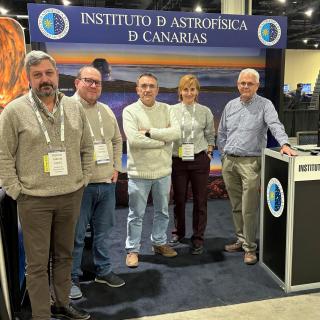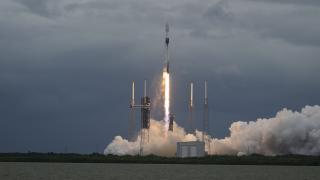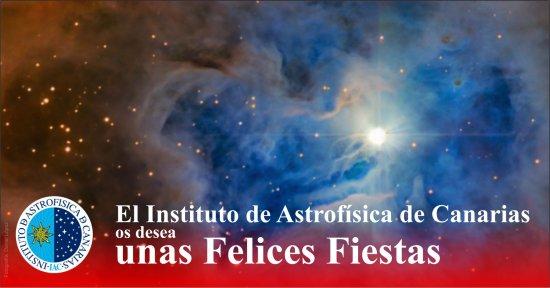It may interest you
-
 The Instituto de Astrofísica de Canarias (IAC) is demonstrating the quality and international relevance of the Canary Islands Observatories at the 245th session of the American Astronomical Society (AAS) meeting being held this week in Maryland (USA). This meeting, led by the American astrophysics community, brings together the world's most important research centres in this field to share lines of work and proposals for the present and the future. The IAC delegation in Maryland is headed by the director of the centre, Valentín Martínez Pillet, who is part of the panel of speakers with aAdvertised on
The Instituto de Astrofísica de Canarias (IAC) is demonstrating the quality and international relevance of the Canary Islands Observatories at the 245th session of the American Astronomical Society (AAS) meeting being held this week in Maryland (USA). This meeting, led by the American astrophysics community, brings together the world's most important research centres in this field to share lines of work and proposals for the present and the future. The IAC delegation in Maryland is headed by the director of the centre, Valentín Martínez Pillet, who is part of the panel of speakers with aAdvertised on -
 Researchers Julia de León and Javier Licandro of the Instituto de Astrofísica de Canarias (IAC) are participating in the Hera mission of the European Space Agency (ESA) , successfully launched from Cape Canaveral, Florida (USA) on 7th October at 14:52 UTC. This is the first European mission for planetary defence which together with NASA’s DART (Double Asteroid redirection Test) will study the effects of a technique for diverting asteroids called “ kinetic impactor”. The DART probe crashed into the smaller ( Dimorphos) of the two asteroids which form the binary system Didymos, on SeptemberAdvertised on
Researchers Julia de León and Javier Licandro of the Instituto de Astrofísica de Canarias (IAC) are participating in the Hera mission of the European Space Agency (ESA) , successfully launched from Cape Canaveral, Florida (USA) on 7th October at 14:52 UTC. This is the first European mission for planetary defence which together with NASA’s DART (Double Asteroid redirection Test) will study the effects of a technique for diverting asteroids called “ kinetic impactor”. The DART probe crashed into the smaller ( Dimorphos) of the two asteroids which form the binary system Didymos, on SeptemberAdvertised on -
 Using observations made with the James Webb Space Telescope (JWST), an international scientific team, in which the Instituto de Astrofísica de Canarias (IAC) participates, has confirmed variations in morning and evening atmosphere of the exoplanet WASP-39 b, about 700 light-years away from Earth. The research has revealed differences in temperature and atmospheric pressure, as well as indications of different cloudiness and winds that could reach thousands of miles per hour. The results are published in Nature. WASP-39 b, a giant planet with a diameter 1.3 times greater than Jupiter, butAdvertised on
Using observations made with the James Webb Space Telescope (JWST), an international scientific team, in which the Instituto de Astrofísica de Canarias (IAC) participates, has confirmed variations in morning and evening atmosphere of the exoplanet WASP-39 b, about 700 light-years away from Earth. The research has revealed differences in temperature and atmospheric pressure, as well as indications of different cloudiness and winds that could reach thousands of miles per hour. The results are published in Nature. WASP-39 b, a giant planet with a diameter 1.3 times greater than Jupiter, butAdvertised on
